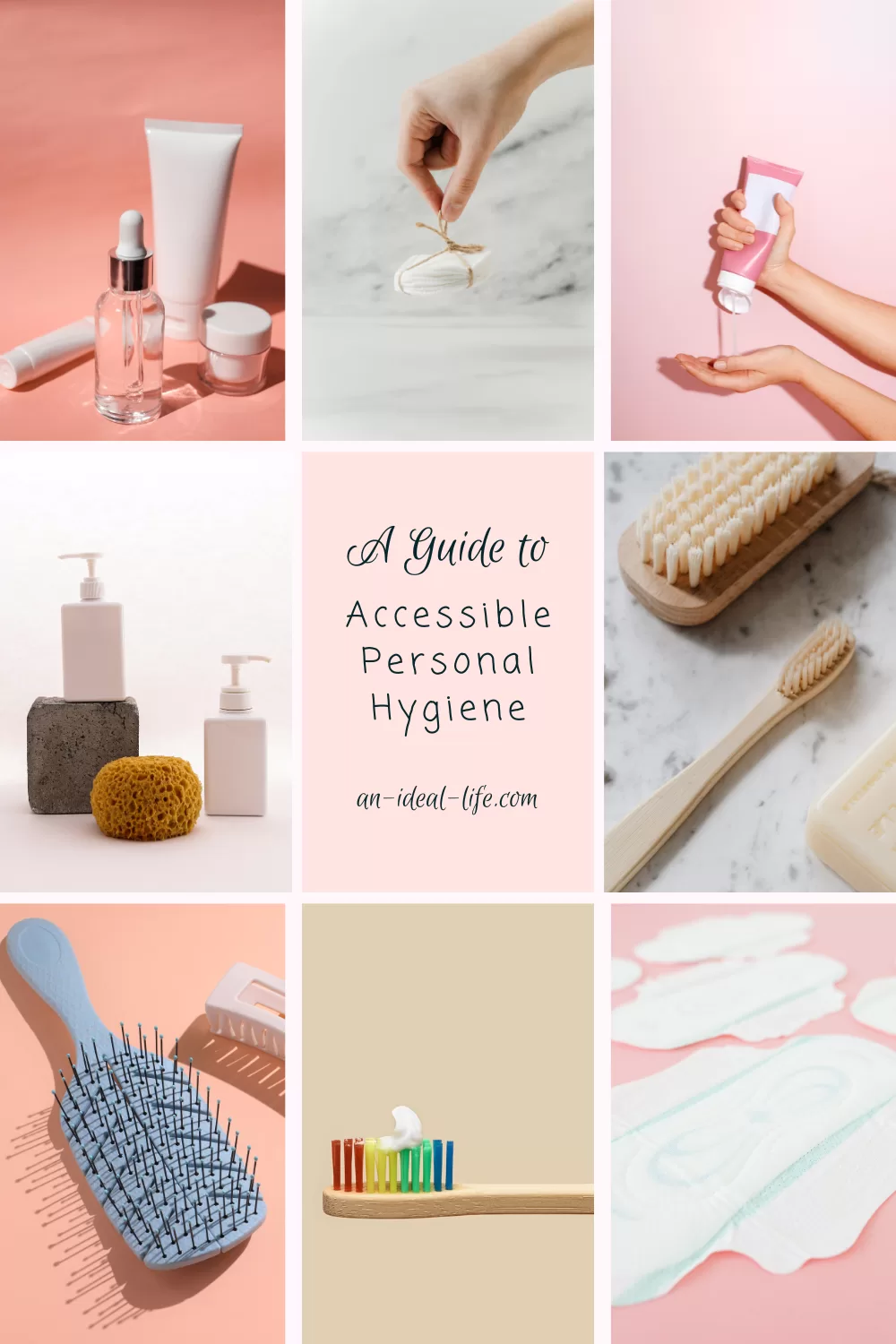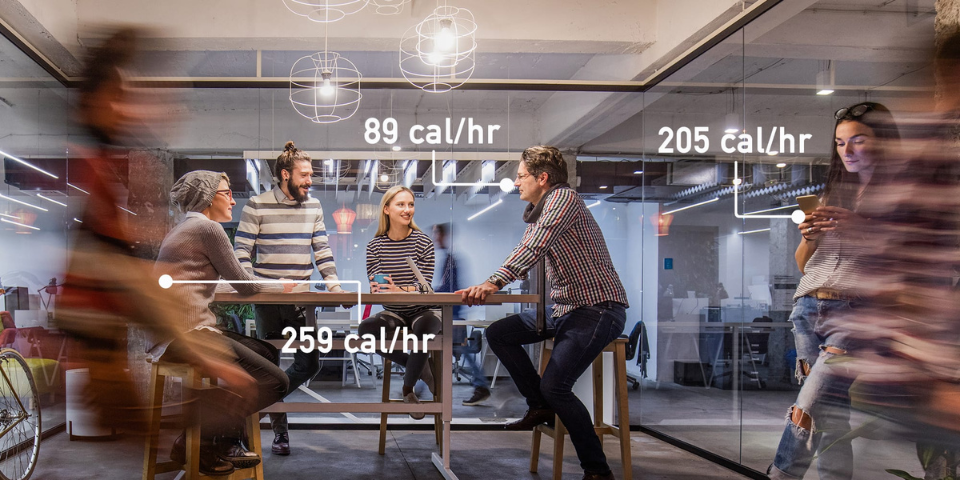Personal hygiene is a seemingly basic part of daily life, but for many of us—whether due to chronic illness, disability, sensory sensitivities, or simple fatigue—it can be a challenge. The good news? There are plenty of tools and adaptations available for more accessible personal hygiene routines, whether you need to conserve energy, avoid pain triggers, or work around executive dysfunction.
*This post may include affiliate or referral links. At no extra cost to you (and with a special reader discount, in some cases!), I’ll receive a small commission or other rewards to help support An Ideal Life. As an Amazon Associate, I earn from qualifying purchases*
The information in this blog post is provided for educational and informational purposes only and should not be construed as medical advice. The content is not intended to be a substitute for professional medical advice, diagnosis, or treatment. Always seek the advice of your physician or other qualified healthcare provider with any questions you may have regarding a medical condition. Never disregard professional medical advice or delay seeking it because of something you have read online. The author of this post is not a licensed medical professional and does not assume any liability for any actions taken based on the information contained in this post.
Rethinking All-or-Nothing Hygiene
Before we dive into specific tools and tips, it’s crucial to reframe our focus. Some days, a full routine with showers, skincare, and hair washing is possible. Other days, just brushing your teeth might feel impossible. Both are completely valid! Accessible personal hygiene isn’t about doing things the right way—it’s about making a routine that works for you, whatever that may look like.
Easier Oral Care
Brushing and flossing can be surprisingly exhausting, especially for those with joint pain, limited mobility, or sensory sensitivities. An electric toothbrush can reduce the effort needed, providing a more thorough clean without require precise hand movements. Some models also include built-in timers to support executive dysfunction. Water flossers can also be a great alternative for those who struggle with traditional flossing, offering an easy way to clean between teeth with minimal dexterity.
On days when brushing isn’t an option, tooth wipes or mouth sprays can offer a temporary refresh. They aren’t a full replacement, but they’re a useful stopgap. For a little improvement when your options are limited, xylitol-base mints, gum, or candy can help support oral health, too. Just be sure to keep any xylitol products out of reach of your furry friends, as it’s toxic to dogs, in particular!
Hassle-Free Hair Care
Washing, drying, and styling hair can take a lot of time and energy. Dry shampoo is a simple way to absorb oil and refresh hair between washes, helping to extend the time between full wash days. If dry shampoo isn’t your thing, no-rinse shampoos or shampoo caps can provide a deeper clean without requiring a full rinse.
Protective styles, satin pillowcases, and leave-in conditioning sprays can also help keep hair manageable with less maintenance. For those who struggle with grip strength or arm fatigue, a detangling brush with an ergonomic handle can make styling easier. When in doubt, a drastic hair chop can make a huge difference in necessary upkeep!
Showering & Bathing With Less Effort
For some, standing in the shower or navigating a bathtub isn’t always an option, but small modifications can make the process easier. A shower chair provides a way to sit while bathing, reducing strain and conserving energy—in shared spaces where such a conspicuous accessibility tool might not be an option, a waterproof bath cushion provides similar support and is easy to store. Handheld shower heads offer greater control and make it easier to rinse without awkward bending or twisting, while non-slip mats and grab bars add an extra layer of safety, preventing falls and providing stability.
On days when a full shower isn’t possible, body wipes can be a quick, low-effort alternative. No rinse body washes are also available: just apply, massage in, and towel off! If even a sponge bath feels like too much, breaking up hygiene tasks throughout the day can help. Washing hair one day and focusing on the rest of the body another can make personal care feel more manageable without draining energy all at once.
Simplified Skincare
Traditional skincare routines can feel like a lot of steps—I know mine is! If washing your face feels like too much, micellar water is a great option. It removes dirt and oil without needing to be rinsed, making it a lower-effort alternative to traditional cleanser. Facial cleansing wipes are an even simpler option, if needed!
Lotion application can also be a challenge, especially if joint pain or fatigue adds to the difficulty. Stick moisturizers and spray lotions require less effort and can be applied in seconds. For those with sensory sensitivities, choosing fragrance-free, lightweight formulas can make skincare more comfortable.
Modified Menstrual Care
Traditional period products don’t work for everyone, but thankfully there are alternatives! Period underwear eliminates the need for inserting anything, offering a simple, wear-and-go option. Organic cloth pads can be softer and less irritating than conventional versions, or for those who prefer longer wear times, menstrual cups require fewer changes throughout the day, making them ideal for low-energy days.
If traditional pain relief methods don’t always cut it, heat patches or wearable units like the Livia device can provide comfort without requiring constant attention.
Read more: Must-Have Menstrual Products
Easy-Access Hygiene Stations
Sometimes, just having hygiene products within easy reach can make all the difference! A bedside setup with essentials like dry shampoo, face wipes, deodorant, and tooth wipes can help for low-energy days. In the bathroom, storing frequently used items in accessible locations can reduce the effort needed for daily hygiene.
For those who need on-the-go options, a small hygiene kit with wipes, hand sanitizer, and pre-pasted toothbrushes can help maintain personal care with minimal effort.
Budget-Friendly & DIY Accessible Personal Hygiene Alternatives
Accessible hygiene products can be expensive, but there are affordable or DIY alternatives that can work just as well!
DIY Dry Shampoo
Store-bought dry shampoo can be pricey or have strong fragrances that trigger migraine attacks or sensory issues. Instead, you can make your own with just a few ingredients:
- For light hair: Cornstarch or arrowroot powder
- For dark hair: Mix cornstarch with a bit of cocoa powder to avoid a white cast
- Apply with a makeup brush and let it sit for a few minutes before brushing out
No-Rinse Body Wipes on a Budget
Pre-packaged body wipes are convenient but can be expensive. For a more affordable alternative:
- Cut up soft washcloths or grab reusable cotton rounds.
- Soak in a mix of warm water, a little gentle soap, and a few drops of witch hazel.
- Store in an airtight container and use as needed.
Affordable Hygiene Tools
Instead of pricey adaptive hygiene products, look for accessible household alternatives:
- Pump soap dispensers are easier to use than traditional bottles and are usually under $5
- Handheld bidets or peri bottles can be a low-cost alternatives to expensive bidet attachments
- Silicone scalp massagers make hair washing easier and can be found for a few dollars
Accessible Personal Hygiene for Mental Health & Executive Dysfunction
Hygiene challenges don’t always stem from physical limitations. Executive dysfunction, depression, anxiety, and other mental health conditions can make personal care feel impossible. If that sounds familiar, you’re not alone! The key is working with your brain and energy levels, not against them.
Body Doubling for Hygiene Tasks
Sometimes, having someone else around, even virtually, can make hygiene feel more doable. This technique, called body doubling, helps with task initiation. You could:
- Call or video chat with a friend while brushing your teeth or washing your face
- Watch a YouTube “get ready with me” video to mimic a sense of shared activity
- Use apps like Pokemon Smile for a virtual companion!
Checklists for Low-Pressure Routines
If remembering tasks in the first place, a low-pressure checklist can offer structure without guilt. Rather than a rigid schedule, try a menu or “pick one” system for accessible personal hygiene:
- Pick just one hygiene task to complete each day if you’re feeling overwhelmed
- Set a timer for one minute and do what you can in that time
- Focus on one area (mouth, hair, body, etc) rather than trying to do everything at once
Making Hygiene Enjoyable
If certain aspects of hygiene feel unpleasant or overwhelming, making them a little more enjoyable can help. Try options such as:
- Playing your favorite music or podcast while showering or brushing your teeth—you could even make a custom personal hygiene playlist!
- Using scented products that make hygiene feel more like self-care, or unscented products if you have scent sensitivity
- Rewarding yourself after completing hygiene tasks, like using a cozy blanket or grabbing a favorite snack
Technology for Accessibility
Technology can provide a ton of support in making hygiene tasks easier and more accessible. Apps like Finch can track hygiene tasks and set reminders, while smart toothbrushes with built-in timers can help with consistency (I love the Quip app to make my “dumb” electric toothbrush a little more smart!).
3D printing has also opened up new possibilities for adaptive hygiene tools. Custom toothbrush grips, soap dispensers, and razor holders can be designed to fit an individual’s needs, reducing strain and improving accessibility. Many of these designs are available for free online, allowing you to print your own accessible personal hygiene tools or order them affordably from printing services. In Pennsylvania, check out TechOWL for essential accessibilities tools!
Modified Routines for Accessible Personal Hygiene
Remembering hygiene tasks can be just as challenging as completing them! Setting phone reminders, using visual cues like sticky notes, or pairing hygiene tasks with existing habits can help.
If full routines feel overwhelming, breaking tasks into smaller steps can make them more manageable. Washing hair one day and taking care of more intricate skincare habits the next can help conserve energy. Using adaptive tools—like long-handled scrubbers or pre-moistened cleansing cloths—can also make routines less physically demanding.
The most important thing? Giving yourself permission to adapt as needed! Hygiene should support your well-being, not feel like an impossible task. If you’ve been struggling with a lack of accessible personal hygiene solutions, know that you’re not alone—and that there’s no shame in finding alternative ways to approach personal care.
What are your favorite hygiene hacks? Share your ideas in the comments!


